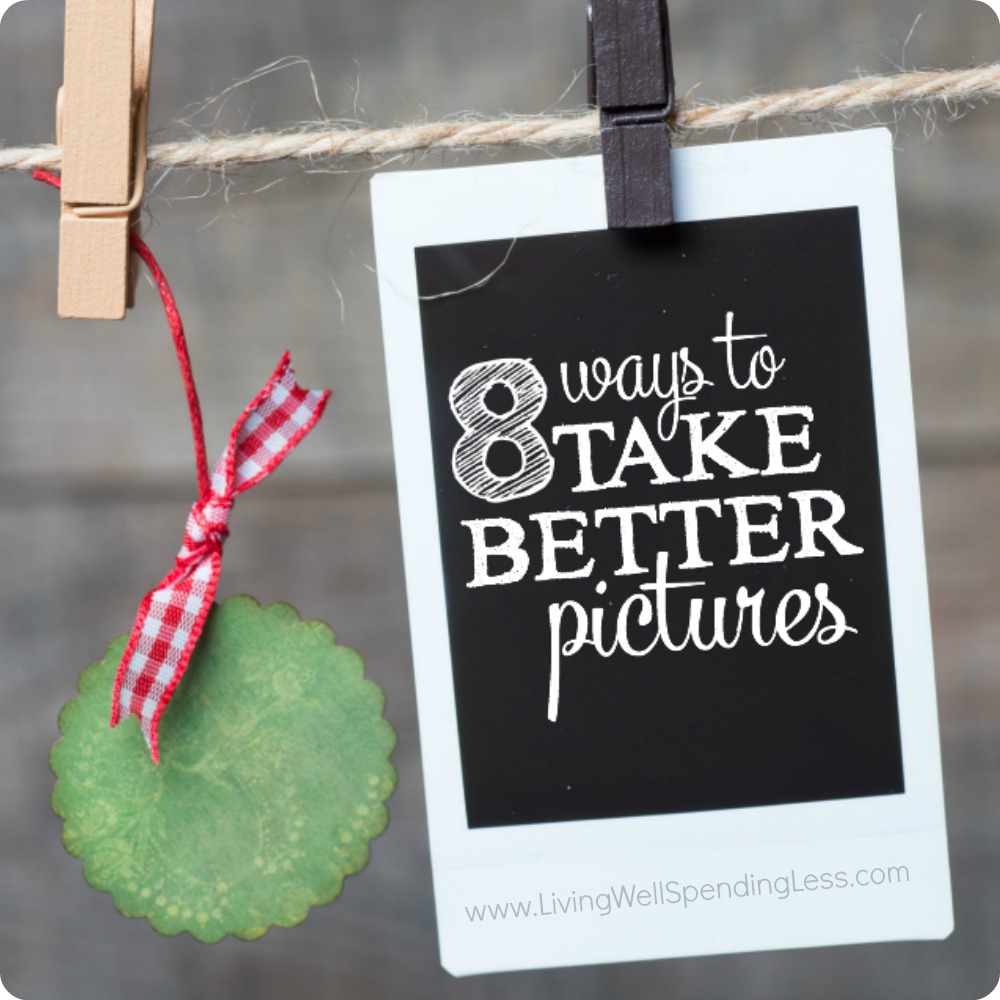
When I first started blogging in 2010, I took terrible pictures. I had absolutely no idea what I was doing, and every image reflected as much. But I knew if I spent some time learning the basics I could do much better. Over the years I’ve read lots of books and tutorials, taken online classes, and practiced and practiced and practiced. A lot. In fact, I’m still practicing.
While I am nowhere close to being a professional photographer, over the years I have discovered a few basic tips everyone can keep in their hat, whether you shoot with your smartphone camera (which these days is often just as good as any point-and-shoot) or if you want to take your hobby to semi-pro.
1. Learn the difference between a photograph and a snapshot
Semantics aside, there’s a true difference between a simple snapshot and a photograph. Snapshots are used to capture a moment in time. They’re a quick way to capture something without attention to (or the necessity of) composition.
You may take a snapshot to remember your parking space or to record a receipt. You may use a quick snapshot to document the leak in your basement that only happens intermittently. You may even use a snapshot to capture something unexpected like action, but usually the best action shots still have an element of composition and thought.
Photographs, on the other hand, are composed with consideration to layout, lighting and subject. A good photograph is crafted with attention to lines, composition and clarity, so the subject stands out and pulls on the eye.
Today’s world leaves plenty of room for both snapshots and photographs. However, to truly capture memories, and to create something you’re proud of that’s worth sharing, you’ll want to put in the consideration and thought required to compose great photographs.
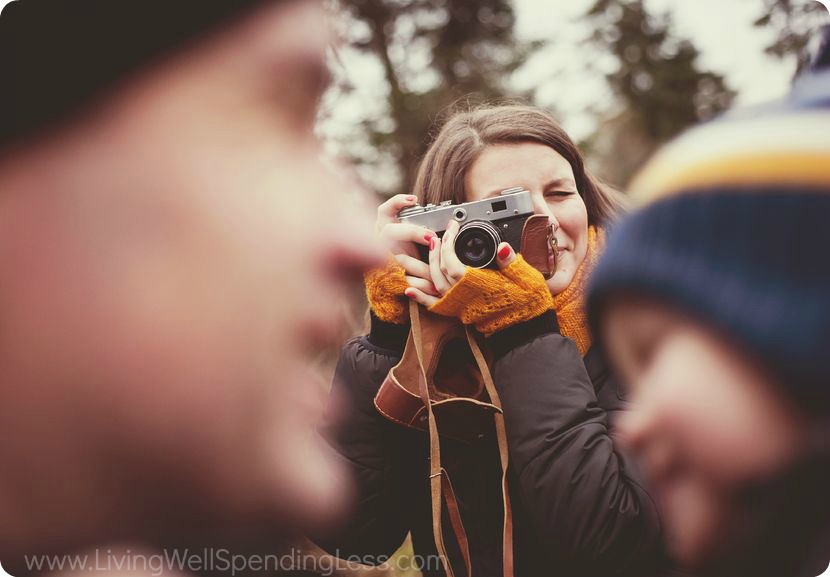
2. Shoot often, and be prepared
Simply HAVING your camera with you and getting in the habit of shooting can take your photography to the next level. Like any skill, photography takes practice. In the days of film, this could become an expensive hobby, but today, we can shoot as much as our hearts’ desire (or our memory cards will hold).
Try shooting multiple rapid-fire pictures of the same subject. You’ll decrease instances of ruined shots because someone blinked or looked away. You’ll also be amazed when you capture those perfect moments, like when ice cream drips on your daughter’s chin or when your little boy’s eyes light up when he sees Grandma and Grandpa walk in the door.
I used to bring my big camera everywhere but smartphone cameras have now improved to the point that there is almost no excuse for not taking pictures whenever you can. (I am literally counting the days until my 2 year contract is over so that I can upgrade to the iPhone 6–the camera is AMAZING!)
3. Be brave!
It may sound trivial and obvious, but many of us feel silly whipping out our cameras and snapping away. We might feel the need to explain or apologize—or maybe worry that it’s not an appropriate time. However, some of the best photographs are taken at impromptu moments. Don’t be afraid to snap those great shots when opportunities arise!
Being an amateur, beginner or even semi-professional photographer can make many of us feel like, “Oh, I have no idea what I’m doing—everyone else knows more about this than I do.” Yes, there’s a lot of photography terminology to learn and all those fancy lenses and accessories can be a little overwhelming.
Just remember: anyone can be a photographer and anyone can learn to take good pictures. Maybe everyone won’t make the cover of National Geographic or Time, but most of us can learn to take a decent-to-great family photo with a little practice and forethought.
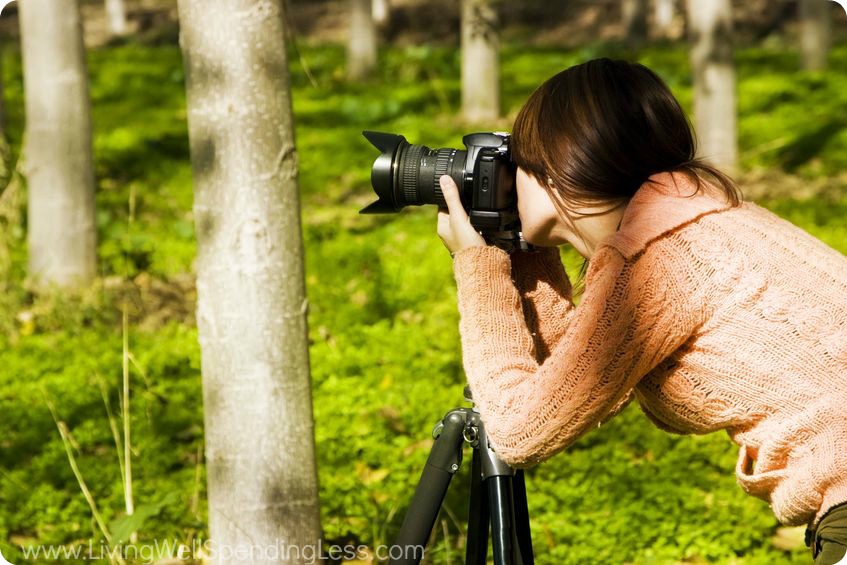
4. Always find the light
For most of us, natural light works best for photographs. Pay attention to the way the light hits your subject; the right lighting can work wonders to draw the eye in, hide flaws and add highlights.
Sunlight and bright overhead light can be harsh and create deep shadows. For those bright and sunny midday shots, learn to work with shade and move your subjects as needed. Shoot in front of a bright window or look for overhangs and areas that are shaded but offer natural, indirect light.
Understanding ISO and shutter speed can really make a difference. Learn about the ISO setting on your camera. (Use higher numbers when light is low and lower numbers when it’s bright out.) Adjust your shutter speed when needed as well: slow it down to allow more light to enter the lens or use a faster speed when you don’t need the extra light.
5. Get steady
Consider using a tripod for clearer, less-grainy photos, especially when you’re using a slower shutter speed. A tripod is also a great tool for family photos. Set your camera’s timer and JOIN IN instead of hiding behind the lens. Tripods can come in handy when snapping pics of the kids, if you have a shaky hand, or if you’re easily distracted.
While tripods aren’t for everyone (sure, they can be a pain to lug around and you may feel ridiculous attaching one to your iPhone), they can really amp up your game in terms of clarity, allowing you to take pictures at slower speeds and in lower light.
If you truly hate the idea of a tripod, there are other options. Try a Gorillapod, a flexible tripod you can hook on to unconventional items, or try a monopod (a single pole that simply steadies your hand). At the very least, take a deep breath before shooting, prop your arm against a table or against your chest or your side, then exhale before shooting.
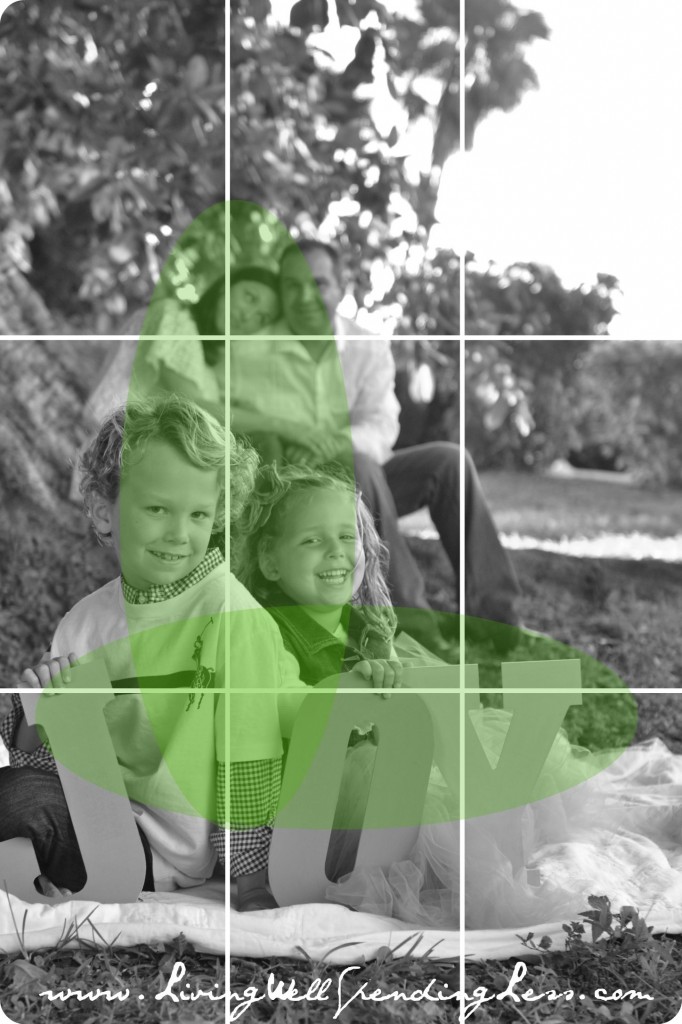
6. Pay attention to composition
If you’ve ever taken an art or photography course, you’ve already been introduced to the rule of thirds. This means you should visually divide any scene into threes, both vertically and horizontally, and aim to have your subject positioned slightly off center. This technique ensures your photos are more visually interesting.
Consider line and angle as well. Try to avoid lines that cut across the frame or lead the eye out of the picture. Try shooting things from a lower or higher angle. Humans often look better from above, shot from a downward angle, but architecture and other items can benefit when shot from below. So, to compose the perfect shot, you might need to move, consider your angle and change your position.
As you improve, don’t be afraid to play with different locations. Take your kids and camera to a park and snap pics on the playground equipment. You’ll find lots of fun and visually interesting lines and angles to play with and it’s a great way to practice.
7. Keep it simple
Be sure you keep photos as simple as possible, for the maximum visual impact. Does this mean moving your children from their bedroom to a stark white sheet or professional backdrop every time you want to take a photo? No, of course not…but give consideration to patterns, distracting items and other things that may detract from your photos. Try simply nudging unflattering items out of the frame with your foot. It also helps to dress your family in solid colors and simple patterns for photogenic events.
Always get a little closer than seems necessary too–make your subject the subject and eliminate distracting backgrounds as much as possible. In the same vein, keeping things simple also means not overthinking it. If your daughters look darling in their best dresses and they don’t quite coordinate, don’t sweat it. Take a fun black and white, add a filter, blur the background or focus on the foreground and you’ll still wind up with a shot you’ll love forever.

8. Take advantage of editing software
Photo editing software can improve the look of your photos, especially in terms of composition and lighting. I like Picmonkey but there are many other options, like Picasa and Photoshop, plus plenty of filter apps and downloadable pic enhancers. Some people feel that using photo editing software is “cheating,” but I look at it this way: editing won’t make a “bad” photograph great, but it will make a good photograph better.
Once you get a handle on the photo editing method of your choice, you can use it to brighten colors, soften backgrounds, and even to smooth blemishes or wrinkles. But, a word to the wise: do not expect miracles. There are lots of websites out there dedicated to Photoshop disasters—please don’t overdo it and damage your photos.
Think of editing as a way to enhance and bring out the best in your photos. I don’t like to over-crop (it lowers the resolution) or use extreme effects. Black and white can fade a busy background. Certain filters can add that special touch and allow you to add text to your images, fade the edges and make the photo look more “finished” overall.
The most important part of photography is simply capturing the moment. For some of us, the bug starts and we get a little addicted—but the real joy is in being able to capture the precious moments and look back on the memories. Photography is really a means to tell a story and a way to document our lives. Whether it’s on a blog, as a family card, or simply for your own personal scrapbook, using just a few of these photography techniques can elevate your photos from good to great.
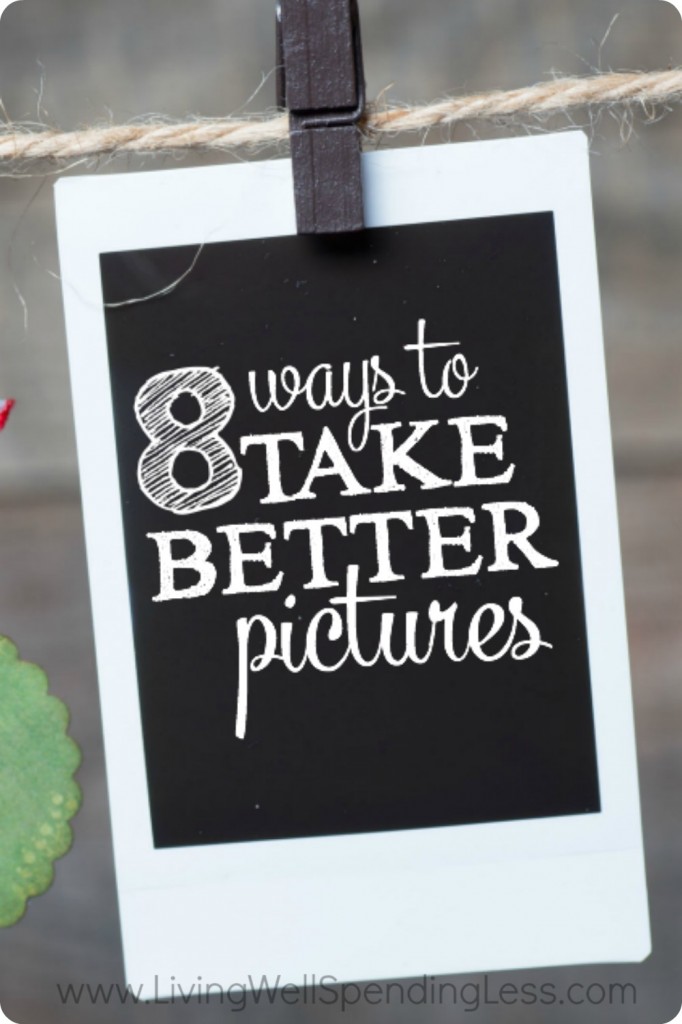
* * *
Do you have anything to add? What are your secrets to the perfect shot?
TAKE BACK CONTROL OF YOUR HOME LIFE
 Ever feel like you just can't keep up? Our Living Well Starter Guide will show you how to start streamlining your life in just 3 simple steps. It's a game changer--get it free for a limited time!
Ever feel like you just can't keep up? Our Living Well Starter Guide will show you how to start streamlining your life in just 3 simple steps. It's a game changer--get it free for a limited time!
If you love this resource, be sure to check out our digital library of helpful tools and resources for cleaning faster, taking control of your budget, organizing your schedule, and getting food on the table easier than ever before.

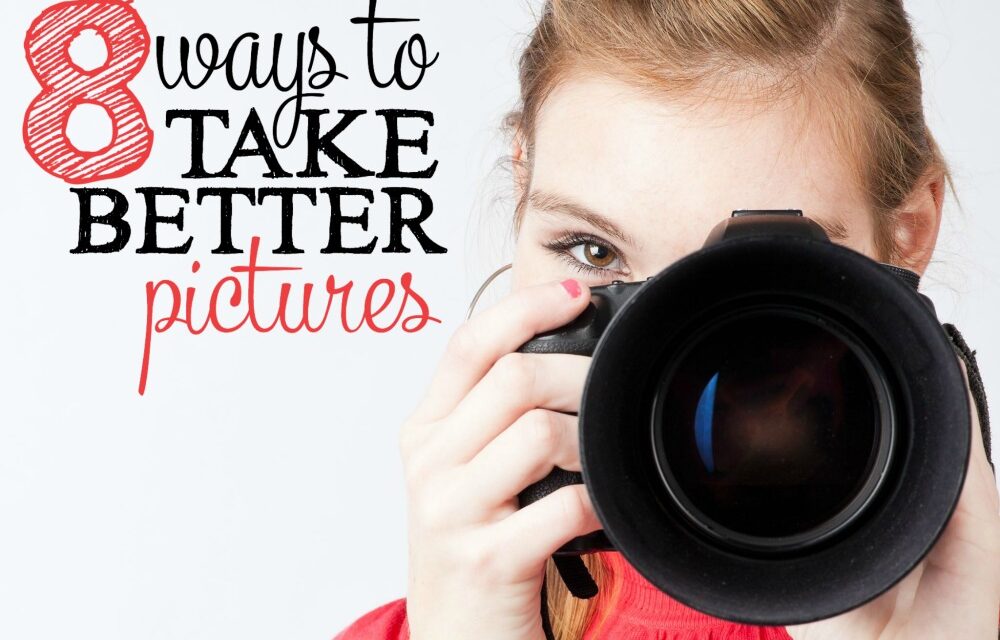








I have enjoyed reading this article. An acquaintance of mine fancied himself as a photographer and one thing I remember him saying is ‘shoot with the light behind you’. So thanks for the additional tips you gave.